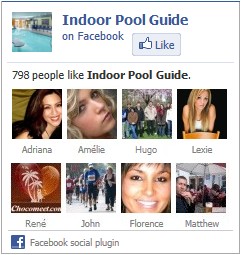
Oxidation
Oxidation is the process of chemically removing organic debris, such as body waste, particulate matter and perspiration, from the water. The process is similar to burning trash in air. It is not important to understand the chemistry involved; it is sufficient to know that enough chlorine in water will chemically « burn » impurities.
The use of chlorine to clean up water is a supplement to filtration, discussed in another chapter. Filters remove the dirt and debris suspended in water, but even the best filter cannot remove dissolved impurities because they are not physically separate from the water. If the water looks dull or hazy, even though the filter system is operating properly, the operator should consider a shock treatment to oxidize the organic impurities and restore the clarity of the water.
Although there are some non-chlorine shock treatments available, the most common method used to shock water is superchlorination.
Superchlorination
Superchlorination is a term that describes an extra large dose (usually 8 to 10 ppm) of chlorine to oxidize organic compounds and kill and remove algae and other contaminants from the water. This is the same as using three to six times the normal dosage of a chlorinating agent. For example, a 50,000-gallon pool requires about four gallons of liquid pool chlorine (12% Available Chlorine) or six pounds of a granular chlorinating compound such as calcium hypochlorite (65% Available Chlorine).
As mentioned, HOCI is the form of chlorine that provides sanitation. Because it is an extremely active chemical, however, it also reacts with organic impurities. When there is enough HOCI present, the impurities are completely oxidized. Combined chlorine is formed when there is an insufficient supply of HOCI or when there is a very high level of organic impurities. Combined chlorine compounds can be oxidized by increasing the HOCI level in the water. The point at which all the organic impurities are oxidized is called the breakpoint. The addition of sufficient chlorine to reach this point is known as breakpoint chlorination.

